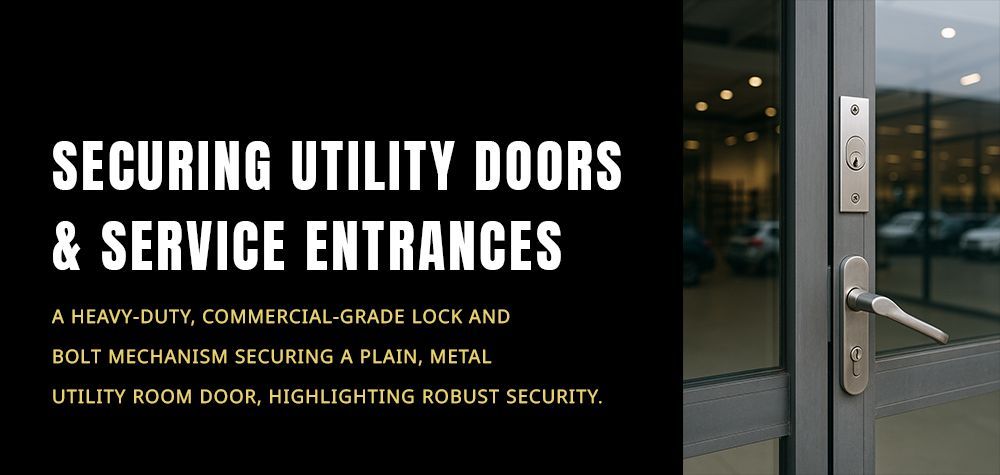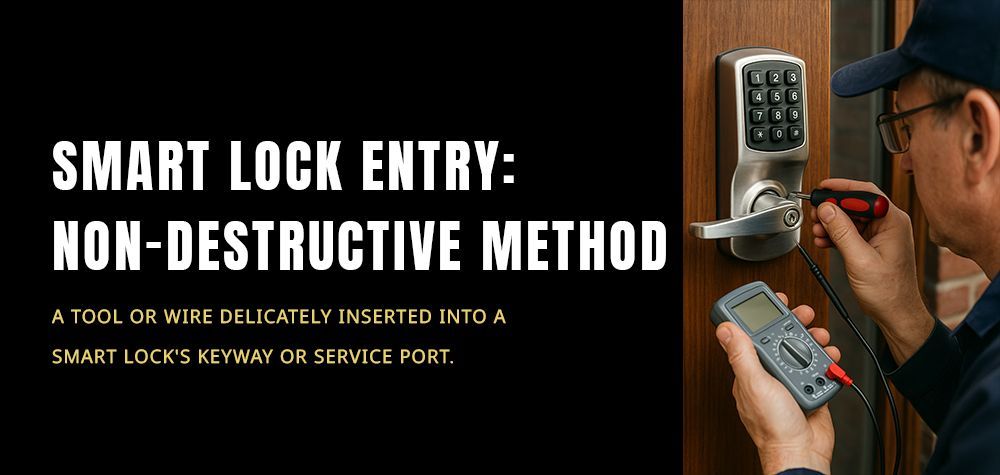How to Prevent Lock Bumping: Securing Your Home and Business
Lock bumping is a common technique used by intruders to gain access to homes and businesses without leaving any sign of forced entry. This method involves using a specially cut key known as a "bump key" that can manipulate traditional pin-tumbler locks, which are commonly found in most properties. While lock bumping is effective and requires little skill, there are several steps you can take to prevent it and secure your property from potential threats. In this in-depth guide, we’ll explore what lock bumping is, how it works, and what measures you can take to safeguard your home and business.
What is Lock Bumping?
Lock bumping is a technique that exploits vulnerabilities in the design of pin-tumbler locks, which make up 90% of home locks. By inserting a bump key into the lock and applying slight force, an intruder can "bump" the pins inside the lock into alignment, allowing them to turn the lock and gain entry. Since this method doesn’t require extensive tools or knowledge, it has become a growing security concern, especially with online tutorials making bump keys more accessible.
Why is Lock Bumping a Threat?
The danger of lock bumping lies in its simplicity and stealth. Here are some reasons why it's considered a significant security threat:
- No visible signs of forced entry: Unlike breaking windows or drilling locks, lock bumping leaves little to no trace, making it harder to prove a break-in.
- Widely applicable: Most pin-tumbler locks can be vulnerable to bumping, including older models that many homes and businesses still use.
- Accessible tools: Bump keys are readily available for purchase, and there are even online guides on how to create them.
How to Prevent Lock Bumping
1. Install Bump-Proof Locks
One of the most effective ways to safeguard against lock bumping is to upgrade your locks. Look for bump-resistant or bump-proof locks that have been designed with features like sidebars, unique pin designs, or rotating mechanisms. Some locks are specifically engineered to withstand bumping by making it impossible for all pins to align simultaneously.
Popular options include:
- High-security deadbolts: Deadbolts from brands like Medeco, Mul-T-Lock, and Schlage Primus offer advanced features that resist lock picking and bumping.
- Smart locks: Digital and keyless entry locks eliminate the need for a traditional keyhole, making bumping obsolete.
2. Use Security Pins
If replacing your locks is not an option, consider upgrading the internal components of your existing lock. Installing security pins, also known as spool or serrated pins, adds an additional layer of complexity that makes bumping far more difficult. Security pins can prevent bumping by making it harder for the bump key to align the pins properly.
3. Strengthen Door Security
Securing your door is as crucial as upgrading your locks. Even if an intruder manages to bypass your lock, additional security measures can prevent them from gaining access to your property.
- Reinforce the door frame with metal strike plates or reinforcements to prevent forced entry.
- Install a door jammer or a security bar that adds resistance to doors being pushed or kicked open.
- Use a secondary locking device such as a chain lock, deadbolt, or door brace.
4. Upgrade to Keyless Entry
Keyless or electronic locks are becoming increasingly popular for their convenience and added security features. With no keyhole to manipulate, keyless entry systems eliminate the threat of lock bumping entirely. These systems often use codes, key cards, or biometric authentication (such as fingerprints) for access.
Types of keyless locks:
- Electronic keypads: Require a numeric code for access.
- Smart locks: Can be controlled through a mobile app, providing both convenience and security.
- Biometric locks: Use fingerprints or retina scans, offering the highest level of security.
5. Consider Anti-Bump Lock Guards
Anti-bump guards are devices designed to cover the keyhole, making it difficult for a bump key to be inserted and used. These guards are often easy to install and can serve as an inexpensive, temporary solution if you aren’t able to upgrade your locks immediately.
6. Use a Quality Lock
Low-quality locks are often more susceptible to bumping. When choosing locks, opt for reputable brands that offer certified security features. Locks certified by organizations such as ANSI (American National Standards Institute) or BHMA (Builders Hardware Manufacturers Association) have been tested for resistance to picking, drilling, and bumping.
7. Work with a Certified Locksmith
The best way to ensure your home or business is secure from lock bumping is to consult a professional locksmith. Certified locksmiths can assess the vulnerabilities in your current lock system and recommend solutions tailored to your needs. Look for locksmiths who are accredited by organizations like the Associated Locksmiths of America (ALOA) for added assurance.
Conclusion: Why Certified Locksmiths are Essential
Choosing the right security measures to prevent lock bumping can be challenging, but working with a certified locksmith will give you peace of mind. Certified locksmiths understand the latest in lock technology and can offer solutions tailored to your home or business's unique needs. Brothers Locksmith, for instance, offers a wide range of residential and commercial locksmith services, including lock upgrades, security system installations, and emergency assistance.
At the end of the day, securing your property goes beyond choosing the right lock. Taking proactive steps, like reinforcing your door, installing bump-proof locks, or using a certified locksmith, can make a significant difference in keeping your home or business safe from potential intruders. By upgrading your locks and adding security features, you’re investing in long-term protection against the threat of lock bumping.
The Importance of Choosing Certified Locksmiths: What to Look For
Call Us Any Time!









